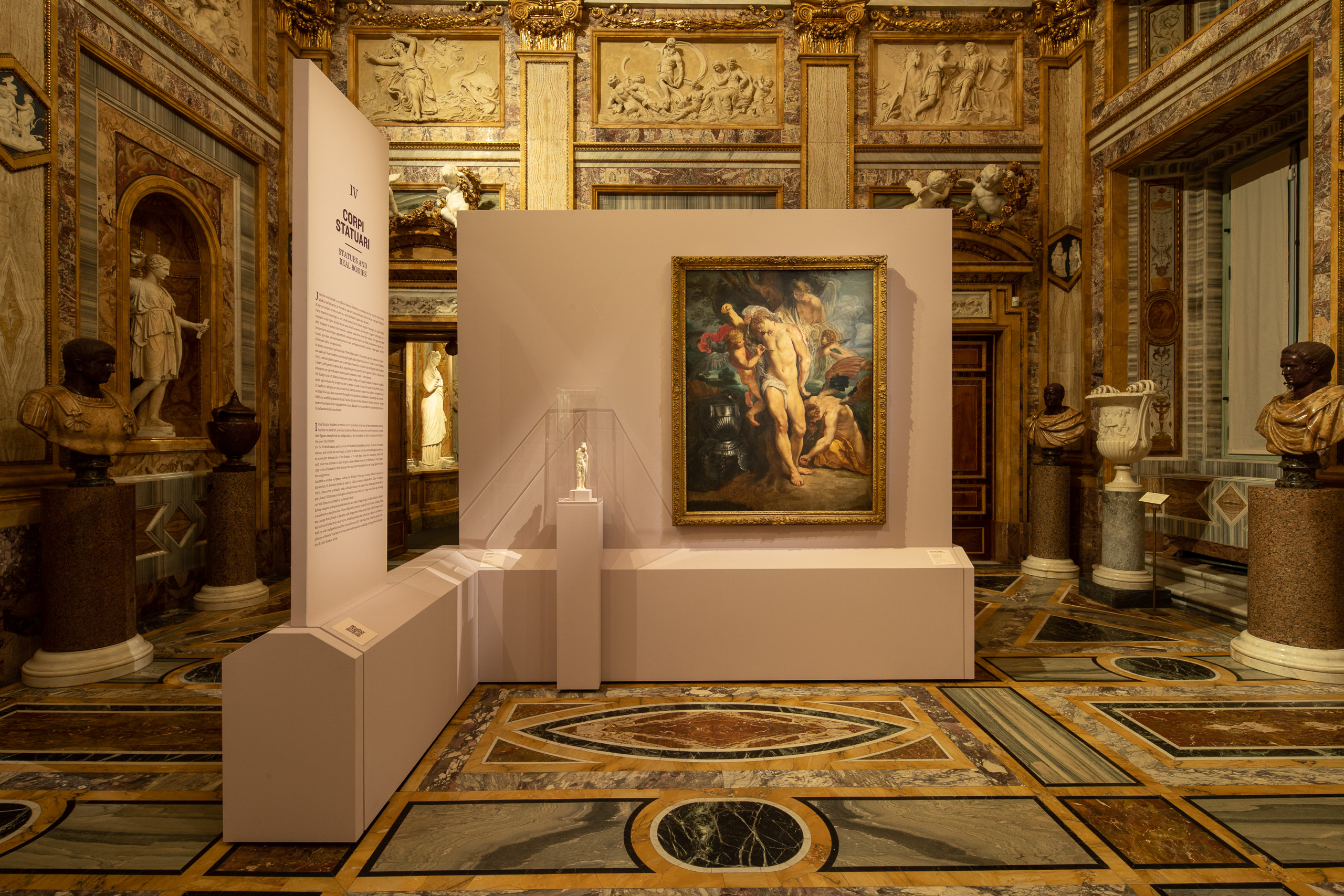STATUES AND REAL BODIES

In his Teutsche Academie, a treatise on art published at the end of the seventeenth century, Joachim von Sandrart, a German student of Rubens, stresses the need for painters to make their figures emerge from the background, to give roundness to their contours and depth to the space they inhabit.
For the Flemish master, and for many artists who followed his example, the study of ancient statuary and reliefs was not simply a chance to discover little known mythological subjects, to investigate the customs of the Romans or to copy their muscular anatomies. Above all, such study was a means to learn to give a new statuary vivacity to the forms in their paintings, to literally embody their protagonists and make
them stand out as living figures within the composition.
Indebted to ancient sculptures such as the Belvedere Torso and Laocoön, Rubens’s heroes (in this section, St. Sebastian Healed by Angels in Galleria Corsini and the Risen Christ in Palazzo Pitti), constructed plastically with a soft chiaroscuro (as seen in the drawing from the Morgan Library) fill the space of the pictorial surface squeezed into a vigorous close-up, standing out with dynamic, compelling sculptural clarity.
Rubens accepted no boundaries between the arts and, through his pictorial production, offered a model even to sculptors who followed him with interest from all over Europe. Among these was George Petel; friend of Sandrart and the painter Anthony van Dyck. The German artist had arrived in Rome in the early 1620s, when he probably had already met Rubens in Antwerp. With his soft tonal gradations of the ivory of his small St. Sebastian, Pete rivals the pearly complexions of Rubens’s subjects, whose poses and muscular modelling clearly provided inspiration for the German artist.